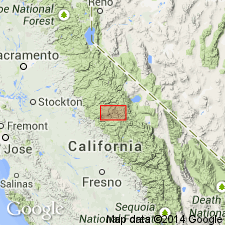
- Usage in publication:
-
- Taft granite*
- Modifications:
-
- Named
- Dominant lithology:
-
- Granite
- AAPG geologic province:
-
- Sierra Nevada province
Summary:
Named for Taft Point, Yosemite National Park [37 deg 42' 46"N, 119 deg 56' 22"W, Yosemite 15' quad, Mariposa Co, CA]. [no type designated] Shown on map. Composes Taft Point and occurs on both sides of middle part of Yosemite Valley. Bounded on northeast and west by main body of El Capitan granite. South of valley is irregularly distributed. Is nonporphyritic biotite granite of even medium-coarse grains. Consists chiefly of white feldspar and smoky gray quartz in grains mostly of 5 mm diameter. Is younger than El Capitan granite. Intruded by Bridalveil granite. [Probably Cretaceous(?)]
Source: GNU records (USGS DDS-6; Menlo GNULEX).
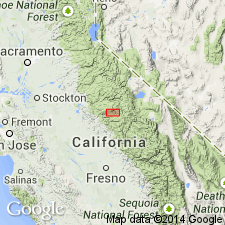
- Usage in publication:
-
- Taft Granite*
- Modifications:
-
- Age modified
- AAPG geologic province:
-
- Sierra Nevada province
Summary:
Described as very light gray, medium grained with typical facies finer grained and more uniform than El Capitan. Is not porphyritic except that rock that may be porphyritic facies of Taft, exposed near eastern portal of Wawona tunnel contains phenocrysts of potassium feldspar. Consists of plagioclase, potassium feldspar and quartz equally abundant; biotite scarce. Listed as youngest of rocks of western intrusive series. [Age changed from Cretaceous(?) to: Cretaceous]
Source: GNU records (USGS DDS-6; Menlo GNULEX).
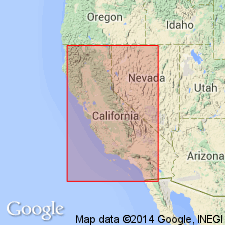
- Usage in publication:
-
- Taft Granite*
- Modifications:
-
- Geochronologic dating
- Age modified
- AAPG geologic province:
-
- Sierra Nevada province
Summary:
Included in Yosemite intrusive epoch. Age changed from Cretaceous to Late Jurassic based on Ru-Sr analysis of 136 Ma.
Source: GNU records (USGS DDS-6; Menlo GNULEX).
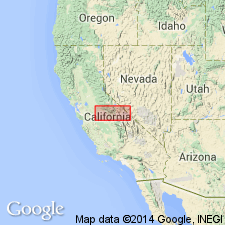
- Usage in publication:
-
- Taft Granite*
- Modifications:
-
- Age modified
- Geochronologic dating
- AAPG geologic province:
-
- Sierra Nevada province
Summary:
U-Pb age on sample 27 (location shown on map) from Taft Granite is 96 Ma.
Source: GNU records (USGS DDS-6; Menlo GNULEX).
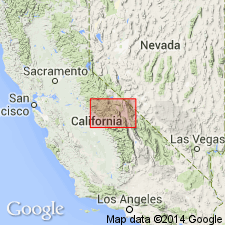
- Usage in publication:
-
- Taft Granite*
- Modifications:
-
- Revised
- AAPG geologic province:
-
- Sierra Nevada province
Summary:
Included as youngest unit of intrusive suite of Yosemite Valley. Mapped undivided with leucogranite of Ten Lakes. Widely separated plutons assigned to these units are composed of rock of same appearance and composition. Typical rock is medium grained and very light gray. Intrudes El Capitan Granite. Is intruded by granitoids assigned to Tuolumne Intrusive Suite, and possible early members of Tuolumne Intrusive Suite, Sentinel Granodiorite and granodiorite of Yosemite Creek. U-Pb age of 95 Ma reported by Stern and others (1981) is discordant and may not have been from a sample of Taft Granite.
Source: GNU records (USGS DDS-6; Menlo GNULEX).
For more information, please contact Nancy Stamm, Geologic Names Committee Secretary.
Asterisk (*) indicates published by U.S. Geological Survey authors.
"No current usage" (†) implies that a name has been abandoned or has fallen into disuse. Former usage and, if known, replacement name given in parentheses ( ).
Slash (/) indicates name conflicts with nomenclatural guidelines (CSN, 1933; ACSN, 1961, 1970; NACSN, 1983, 2005, 2021). May be explained within brackets ([ ]).

